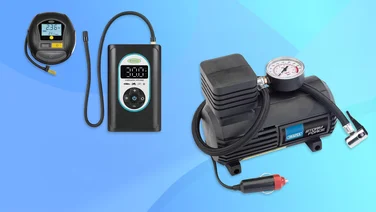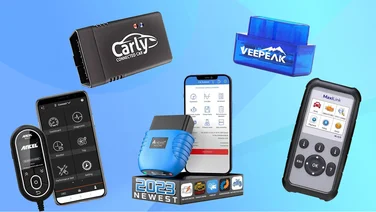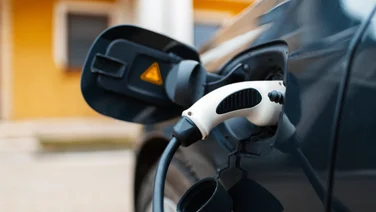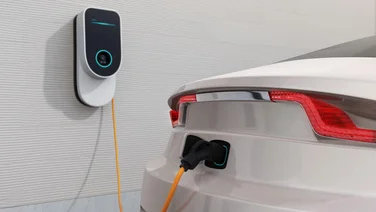To help us provide you with free impartial advice, we may earn a commission if you buy through links on our site. Learn more

Petrol prices are coming down, and so is the cost of a decent satnav app. With features such as offline maps, automatic rerouting around traffic, and petrol price comparison, these free satnav apps now offer functions that were once the preserve of the paid-for software.
So which is the best app for your smartphone? We’ve been testing three of the leading contenders for several weeks to discover which offers the best chance of getting from A to B without ending up in a two-mile tailback or stuck down a cul-de-sac.
Nokia HERE – 3 stars – Android, Windows Phone
Nokia HERE is a newcomer to the satnav scene for most drivers, having previously been restricted to Windows Phone handsets. It’s out in beta now for Android, with an iOS version on the way.
HERE’s huge advantage over its two rivals is its downloadable maps, making it the only satnav app on test here that can get going without a data signal. That’s not only a boon in areas with iffy 3G signals, it also means you can find your way on foreign trips without relying on extortionate data roaming charges.
You might need to clear a bit of storage space on your smartphone, mind. You’ll need around 10GB of free storage to download maps for the whole of Europe, although only 673MB for the whole of the UK. Those who are really tight for space can download individual countries (England is 547MB by itself) or simply download the maps on demand over 3G/4G.
It’s not only maps you can download. HERE also offers a range of “hi-fi” voices that are much clearer than the scratchy narration that is installed by default – they’re free and take up another 55-65MB of storage space, depending on the language you choose.
The HERE driving interface is the clearest of any of the three on test here. There are big, bold directions at the top of the screen, with the next turning named in a decent-sized font, and voice guidance arrives in ample time. The maps themselves are well defined with the highlighted route made very clear. The only distraction is the speed warnings, which beep every time you stray over that road’s limit, but these can be switched off.
Alas, we found HERE wanting when it came to delivering driving instructions. It occasionally took us on peculiar routes when we were testing on local roads we knew well, and on one occasion it literally instructed us to drive round the block, returning to the exact same junction, for no reason whatsoever. HERE does offer live traffic information (supplied by Traffic.com), showing you the traffic delay on route alternatives before you get going, but the app won’t actively reroute you if an incident occurs while you’re in transit, which is a major drawback, especially on long journeys.
HERE is a little too erratic for everyday use, and the lack of automatic rerouting around traffic snarl-ups is a killer blow. However, the offline maps facility makes it a useful backup to have installed on your phone for emergencies, when a lack of 3G signal might otherwise leave you stranded.

Waze – 3 stars –Android, iOS, Windows Phone
Many Waze users feared the worst when Google bought the company in 2013, but the quirky, community-powered satnav remains true to its core values. The multi-platform app relies on feedback from fellow users – some automatically generated, some manually – to warn others of traffic jams, accidents, police speed traps and other hazards.
That information is presented on the cartoon-style maps, with a glut of icons showing you the position of other Waze users, the current speed on certain roads, marked hazards and more. There’s also a gaming element to Waze, with users collecting points for passing certain items marked on the map, as well as for driving set distances and repeated usage of the app. That’s not to mention the chat facilities, which allow you to send messages to fellow Waze users you spot on the map.
With all of this switched on by default, we find Waze almost dangerously distracting. Your eye is constantly drawn to another symbol appearing on the map, or an audio alert pinging because you’ve scored 25 points for collecting “Road Goodies”. To our mind, a satnav app should be seen and not heard unless necessary, but thankfully you can turn most of the needless fripperies off (go to Settings, Display Settings, Show on Map and remove all but the bare essentials, is our advice).
Once streamlined, Waze is a seriously good satnav. The search facility is excellent – allowing you to enter postcodes, street names or names of venues, or even select locations from appointments in your phone’s calendar. We found no problems with the driving directions in multiple tests on both long and short journeys. Although Waze claims to offer automatic rerouting around jams, we didn’t experience this in our tests, although we didn’t run into any serious snarl-ups, either. Voice instructions generally arrive in good time, although the text at the top of the screen showing the distance to and name of the next turning could be bigger.
There are a couple of unique add-ons that make Waze stand out. The facility to find the cheapest local petrol is genuinely useful, as is the option to send an automatically generated text to someone in your phone’s address book to let them know your ETA.
As with Google Maps, you’re on your own if you can’t get a data signal at your start point and we find some of the distracting features of Waze almost criminally irresponsible, but once it’s been customised to minimise distractions, there’s plenty to admire.

Google Maps – 4 stars – Android, iOS
Google Maps has gradually added features over the years to make it a serious rival to paid-for apps such as TomTom and CoPilot. Two killer features have been added over the past year alone. Google’s satnav now offers auto-rerouting if changing traffic conditions means a faster alternative becomes available. This saved us from a two-junction tailback on the M25 during our tests, knocking as much as an hour off the journey time. Google’s acquisition of Waze is also paying dividends, with accidents and jams reported in that app now appearing in Google Maps.
The other major addition is motorway lane guidance, helping you put your car in the right position as you approach major junctions. Lane markers appear at the top of the screen, giving you plenty of warning to get across.
As you would expect from Google, the search facility is excellent, letting you enter postcodes, road names or merely the name of a venue. It also provides shortcuts to hunt down useful amenities close to your current location, although this is erratic: a search for local supermarkets threw up the offices of Moneysupermarket.com 39 miles away, but not the Tesco 250 yards down the road.
Driving directions are perfectly clear with Google Maps, and we like the way it stacks directions at the top of the screen if there’s more than one instruction coming in quick succession. The option to overlay traffic data on the live map is useful, although the overhead satellite view offers little but confusion. We had no serious problems with Google’s choice of routes on either long or short journeys, and the live traffic data (generated by harvesting data from other Android users) was almost unerringly accurate in our tests.
The Google app is, however, hugely demanding on the phone. It routinely struggled on our relatively powerful HTC One, and on one occasion crashed entirely, leaving us without road directions at a set of busy roundabouts. You’re also left in the dark if you attempt to start a journey without a data signal. Maps of specified locations can be saved for offline reference in advanced, but it’s clumsily implemented and didn’t work well in our tests.
Overall, however, Google Maps is the app we’d use for day-to-day car journeys. It’s powerful, accurate and isn’t bogged down by the needless distractions in Waze.







